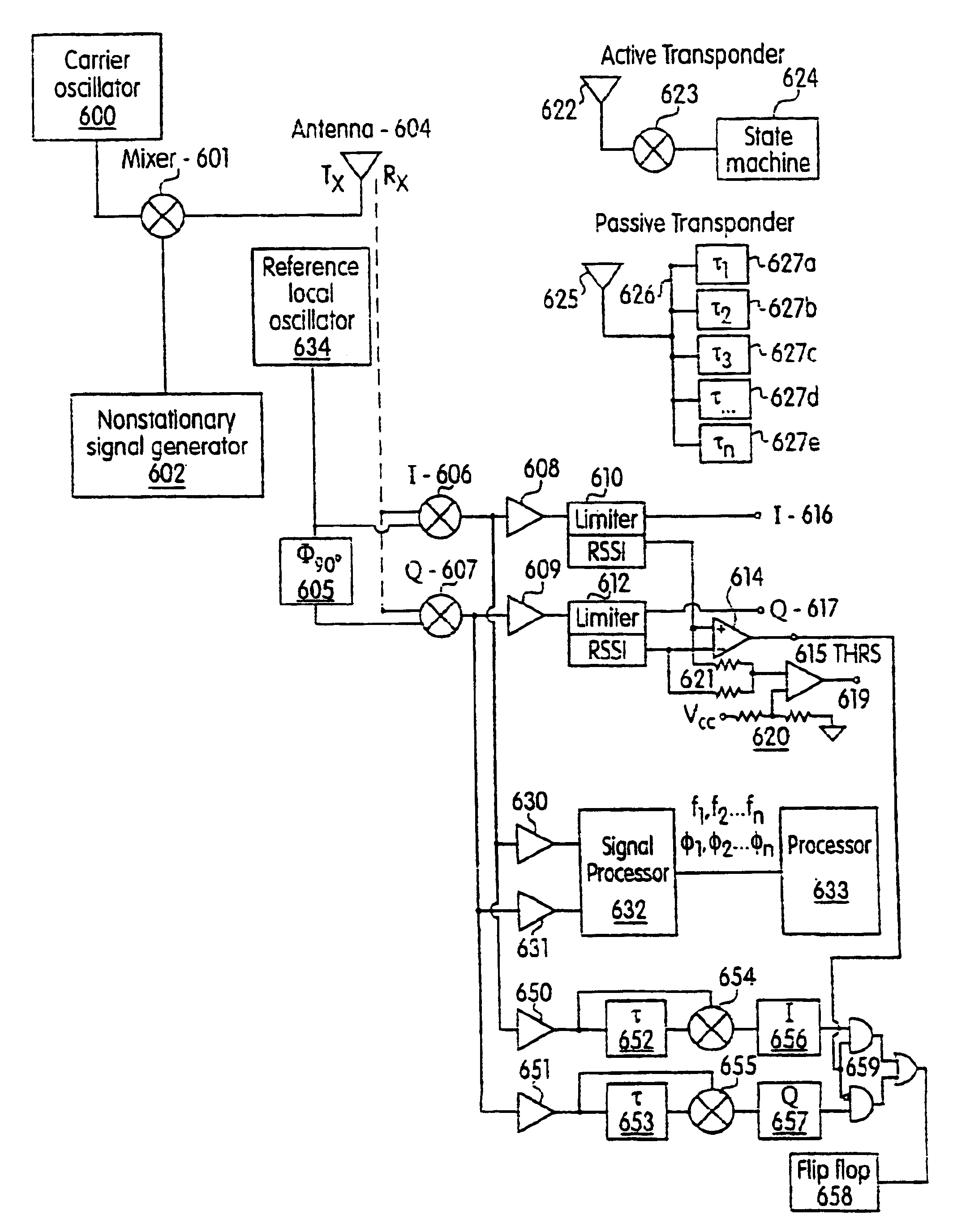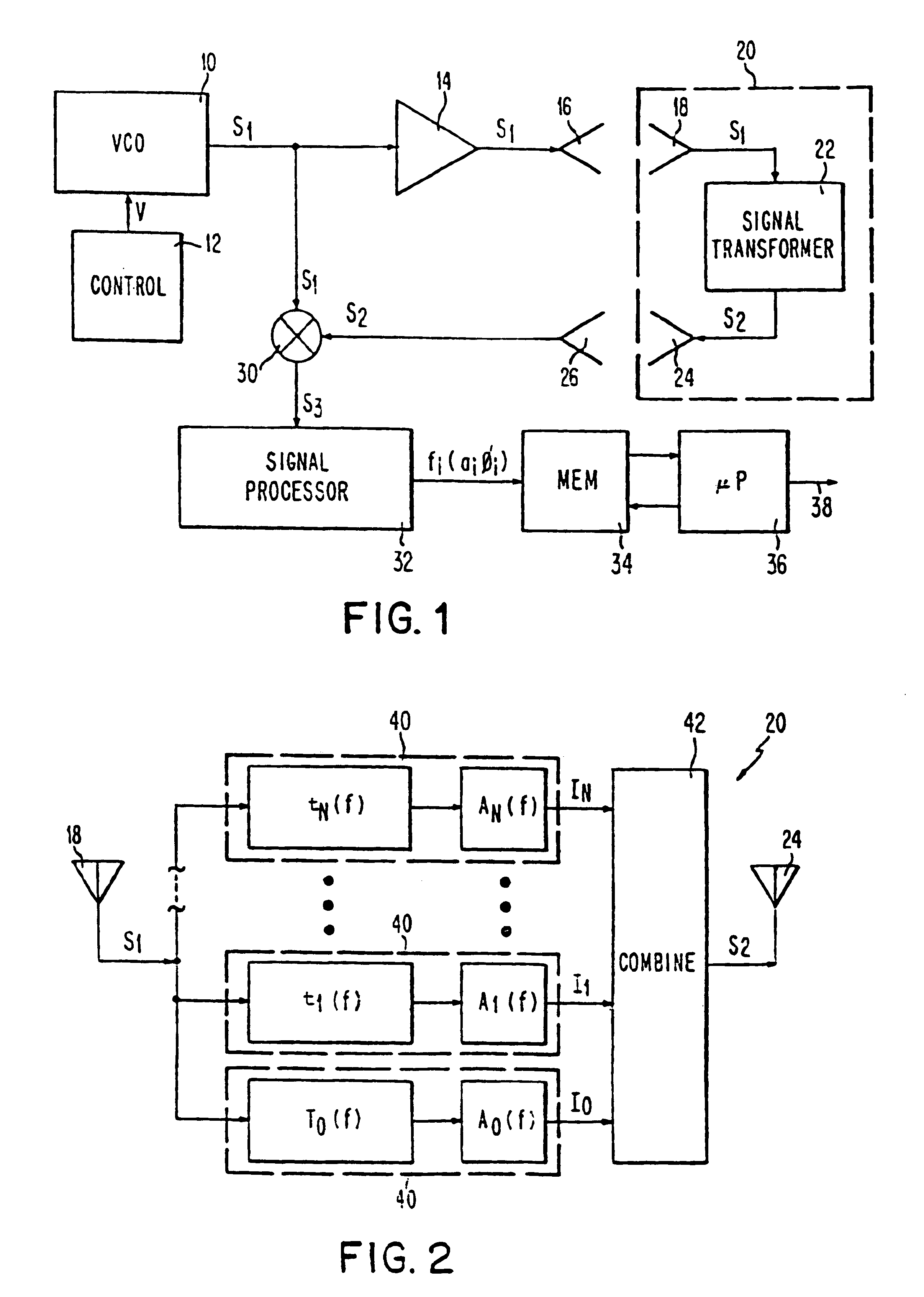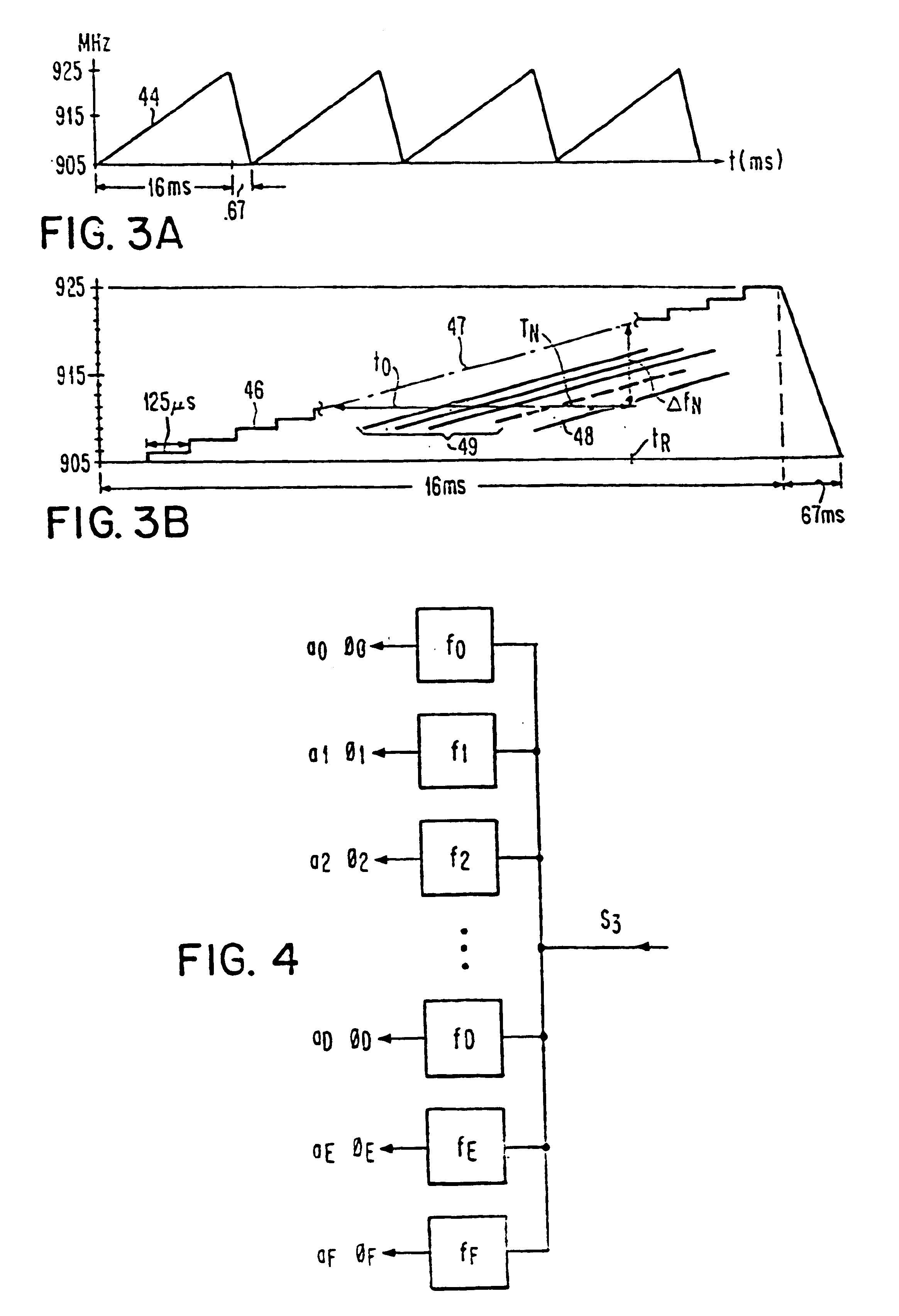Dual mode transmitter/receiver and decoder for RF transponder units
a transponder unit and dual-mode technology, applied in the field of rfid receiver system, can solve the problems of not standardizing the various rf-id applications and complex known devices
- Summary
- Abstract
- Description
- Claims
- Application Information
AI Technical Summary
Benefits of technology
Problems solved by technology
Method used
Image
Examples
first embodiment
ACTIVE TRANSPONDER—FIRST EMBODIMENT
[0192]Typical semiconductor memory active tag system are described in U.S. Pat. Nos. 4,739,328; 4,782,345; 5,030,807; 4,999,636; 5,479,160; 3,914,762; 5,485,520; 4,123,754; 5,086,389; 5,310,999; 4,864,158; 4,853,705; 4,816,839; 5,055,659; 4,835,377; 4,912,471; 4,358,765; 4,075,632; and 3,984,835 incorporated herein by reference.
[0193]U.S. Pat. No. 4,739,328 provides a system which interrogates an active semiconductor memory tag, as shown in FIGS. 30 and 39-43. The system produces pluralities of cycles of signals at first and second harmonic frequencies. The cycles of the signals identifying a binary “1” are symmetrical to the signals identifying a binary “0”. In other words, the cycles at the second frequency occur before a cycle at the first frequency to represent a binary “1” and the cycle at the first frequency occurs before the cycles at the second frequency to identify a binary “0”. A code is also provided, different from a “1” or a “0”, indic...
second embodiment
ACTIVE TRANSPONDER—SECOND EMBODIMENT
[0237]The modulated signal from a backscatter transponder such as described in the first embodiment of the active transponder may also be detected by sensing edges of phase transitions of the received signal, indicative of a change in modulation state. Thus, in the present second embodiment, the description of the interrogation signal transmitter, transponder, and symbol analyzer do not change. As in the first embodiment, the signal from the stronger phase is preferably analyzed. These edges may be detected by providing a differentiator or delay line 652, 653 with a time constant τ greater than the edge transition timing and less than the intersymbol timing and a change timeconstant for the interrogation signal, and then detecting a phase transition edge. As noted above, the modulation scheme for typical backscatter RF-ID tags provides, for each symbol, a sequence of transitions. Thus, with each change in modulation state, an accompanying edge is ...
PUM
 Login to View More
Login to View More Abstract
Description
Claims
Application Information
 Login to View More
Login to View More - R&D
- Intellectual Property
- Life Sciences
- Materials
- Tech Scout
- Unparalleled Data Quality
- Higher Quality Content
- 60% Fewer Hallucinations
Browse by: Latest US Patents, China's latest patents, Technical Efficacy Thesaurus, Application Domain, Technology Topic, Popular Technical Reports.
© 2025 PatSnap. All rights reserved.Legal|Privacy policy|Modern Slavery Act Transparency Statement|Sitemap|About US| Contact US: help@patsnap.com



